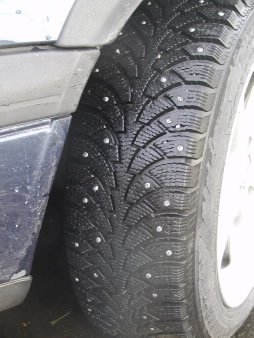FOR IMMEDIATE RELEASE
ACS News Service Weekly PressPac: January 05, 2011
How studded winter tires may damage public health as well as pavement
Scientists are reporting new evidence on how studded tires — wintertime fixtures in some areas but banned in others for causing damage to pavement — may also damage the health of motorists and people living near highways. Studded tires have small metal protrusions from the rubber tread that improve traction on icy or snow-covered roads. Their study appears in ACS’ Chemical Research in Toxicology, a monthly journal.
Anders Ljungman and colleagues note that studded tires grind away at the road surface, generating the kind of dust particles believed to contribute to heart and respiratory disease when inhaled into the lungs. Studded tires are winter mainstays in Finland, Norway, Sweden and other northern countries, but have been banned or restricted in others and in some states because they damage pavement. The scientists’ past research found that road dust from studded tires causes biological changes in cells related to inflammation, a process underlying heart and respiratory diseases.
In the new research, the scientists pinpointed specific changes in proteins in cells related to the road dust exposure. Dust exposure resulted in significant increases in three proteins associated with increased inflammation and decreased levels of seven proteins, including some involved in fighting inflammation and maintaining normal metabolism. The results reveal important chemical markers in the body that could help scientists better understand the link between pavement dust and heart disease, the scientists suggest.
![]()

Contact
Science Inquiries: Michael Woods, Editor, 202-872-6293
General Inquiries: Michael Bernstein, 202-872-6042


